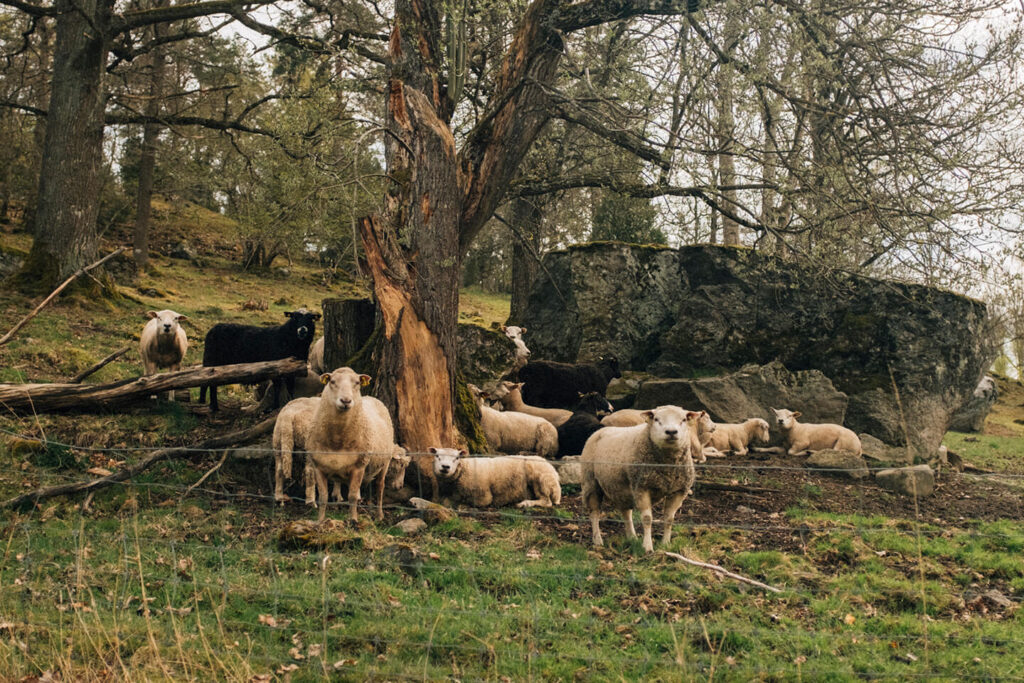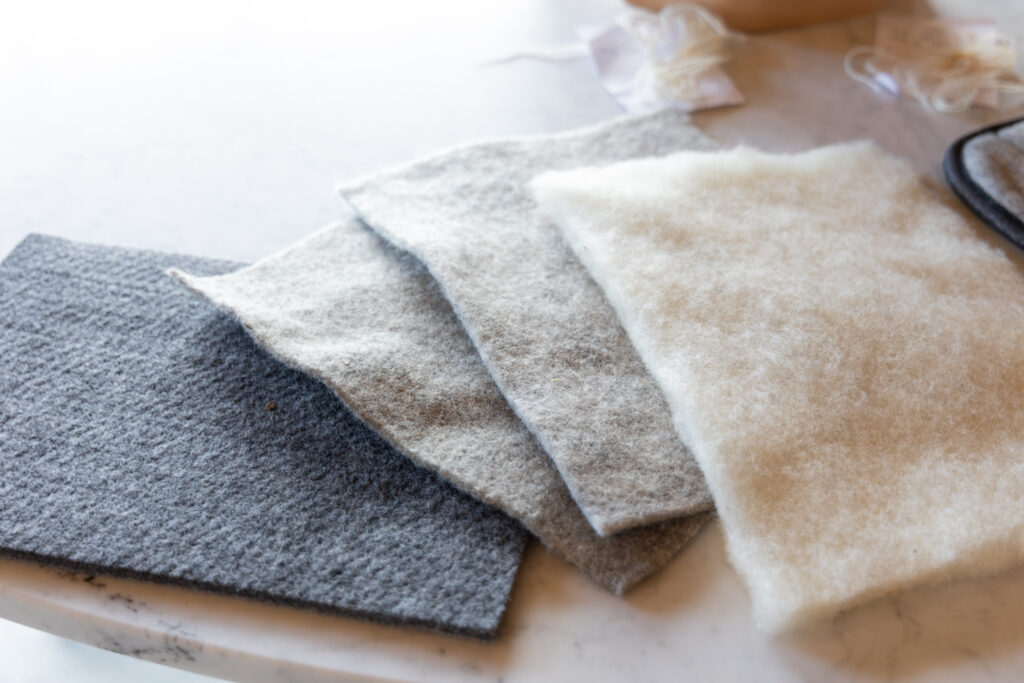New Study Reveals Sustainability Benefits of Swedish Wool
2023.06.15

Axfoundation is spearheading the Swedish Wool Initiative, a cross-sectoral collaboration with a vision to decrease Swedish wool waste down to zero.
Press release 06-15-23: The IVL Swedish Environmental Research Institute has analyzed the sustainability of Swedish wool. The results indicate that Swedish wool production can have lower climate impact and several other positive effects compared to wool production in other countries. The study has been carried out within The Swedish Wool Initiative led by Axfoundation.
“Swedish wool can offer both lower climate impact and water usage than imports. Additionally, Sweden’s animal welfare regulations are often stricter than those of other countries, resulting in lower antibiotic usage as a positive outcome. Swedish wool has great potential to contribute to the transition towards a sustainable textile industry,” says Elvira Molin, lifecycle expert at IVL Swedish Environmental Research Institute.

Demand for wool is increasing in Sweden, yet over half of the wool produced in Sweden is discarded or incinerated.
Today, the textile industry consumes significant resources and has a large environmental and climate footprint. One necessary change in production is to use, or rather return to using, sustainable raw materials for textiles. Wool is a prime example of such material since it is natural and renewable, and can be reused, or broken down in nature, thereby reducing the material’s environmental impact.
Demand for wool is increasing in Sweden, but most of the need is currently met through imported wool, while over half of the wool produced in Sweden is discarded or incinerated.
“Swedish wool comes from animals in sheep and lamb meat production, where wool is a byproduct. These sheep are bred for meat rather than wool quality, which means that the wool doesn’t always lend itself to the finest textile manufacturing. So far, it has been challenging to find a market for wool in other qualities,” says Elvira Molin.

The wool can be used in everything from fine textiles to lining in jackets and in woven carpets.
However, there is now a noticeable change in the market, with more and more Swedish brands in fashion, outdoor, and home textiles expressing interest in purchasing Swedish wool. According to the project The Swedish Wool Initiative, which is behind the sustainability analysis, there is interest in expanding its use in everything from fine textiles to lining in jackets and use in woven carpets.
“To strengthen the expansion of the Swedish wool industry, we need to address issues such as quality assurance, pricing, and infrastructure for wool processing. These are challenges that the entire industry are tackling through the Swedish Wool Initiative. This study is an important step in understanding the overall sustainability impact of wool,” says Johan Sidenmark, project manager at Axfoundation.
The results from the sustainability analysis suggest that Swedish wool production can offer lower climate impact and more positive effects compared to wool production in other countries. One advantage is that water usage in Swedish agriculture is lower than in other countries, reducing the water footprint of domestic feed production.
Swedish farms also generally allocate more land for grazing than for crop cultivation, contributing to increased biodiversity by preserving diverse landscapes and habitats. Another advantage is that Swedish animal welfare regulations are stricter than in other countries, resulting in lower antibiotic usage and fewer medical interventions for animals. However, one factor that increases the climate impact of Swedish wool production is that sheep in Sweden are almost always fed supplemental feed during the winter, which is not necessary for countries where grazing is available year-round.
Four facts from the sustainability analysis of Swedish wool
Climate impact: Swedish wool production may have a lower carbon footprint than imported wool, but making precise comparisons is difficult. The carbon footprint of wool varies significantly, and different parameters are used. Swedish virgin wool has an impact ranging from -27 to 36 kg CO2e/kg raw wool, while recycled wool has a considerably lower impact of 0.63 kg CO2e/kg.
Water usage: Drawing conclusions about wool production is challenging since wool is a byproduct of sheep meat in Sweden. However, the production of Swedish sheep meat may have lower water usage compared to imported meat from countries such as Ireland and New Zealand. Swedish sheep meat also contributes to less water stress due to greater water resources.
Animal welfare: Swedish animal welfare regulations are often stricter than in other countries, leading to lower antibiotic usage and fewer medical interventions for the animals.
Land use: Swedish sheep farms generally use more land for grazing than for crop cultivation, contributing to increased biodiversity by preserving diverse landscapes and habitats. However, a parameter that increases the climate impact of Swedish wool production is that sheep in Sweden are usually kept indoors and provided supplementary feed during the winter months, which is not necessary in countries where grazing is available year-round.
“In the next step, we hope to conduct a comprehensive life cycle analysis where we can manipulate different parameters to see which factors have the greatest effect, such as the number of uses of a garment, washing, or solely feed in primary production,” says Elvira Molin.
Contact:
Elvira Molin, lifecycle expert at IVL Swedish Environmental Research Institute, , tel. +46 (0)10-788 67 39
Johan Sidenmark, Project Manager at Axfoundation, , tel. 076-140 91 20
Facts: Wool and Textile Production
- In Sweden, approximately 1,000 metric tons of wool are produced annually, but over 50% of the wool is discarded, burned, or destroyed. Swedish wool is rarely considered a marketable resource and is instead disposed of as a byproduct of the meat industry.
- At the same time, Sweden imports around 1,650 metric tons of wool each year in the form of raw wool, carded wool, and yarn to meet the growing demand for wool in the country. Most of the wool used in the textile industry is imported, primarily from Australia, China, and New Zealand.
- Global demand for new textile fibers is projected to increase by 150% by 2050, placing greater pressure on both climate and the environment.
- Swedish brands in the fashion, outdoor and home textile industry are increasingly seeking regionally produced, bio-based, and recyclable materials with circular potential. Wool is an example of such material.
Facts: The Swedish Wool Initiative
The sustainability analysis is part of the project The Swedish Wool Initiative led by Axfoundation and funded by Vinnova, as well as “Ull som resurs 2.0” led by Hushållningssällskapet Halland and financed by the Swedish Board of Agriculture.
The Swedish Wool Initiative is a collaboration among around 20 organizations: Axfoundation, Filippa K, Fjällräven, Tiger of Sweden, Klippan Yllefabrik, Smart Textiles/Borås Science Center, IVL Swedish Environmental Research Institute, Chalmers Industriteknik, Circularista, LE Ullkonsult, Norrby gård, Västkustens Ullinsamling/CC Wool, Ullcentrum, Ullkontoret, Svenska Fårklipparförbundet, LRF, and TrusTrace, among others.
The project’s expert group includes Animalia, Norilia, Hushållningssällskapet Halland, and the Swedish Sheep Breeding Association. The project is carried out with support from Vinnova’s Sustainable Industry program.














































